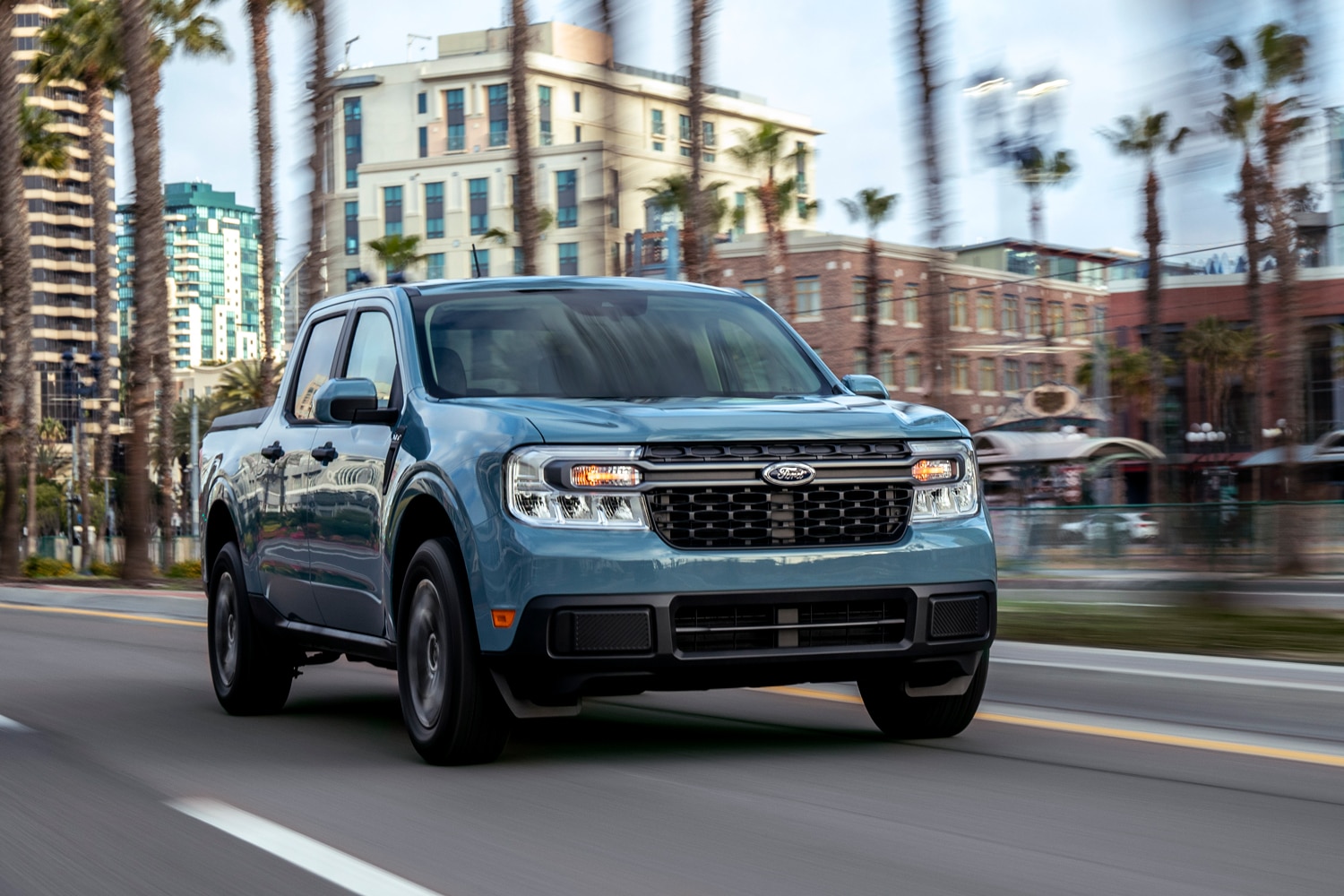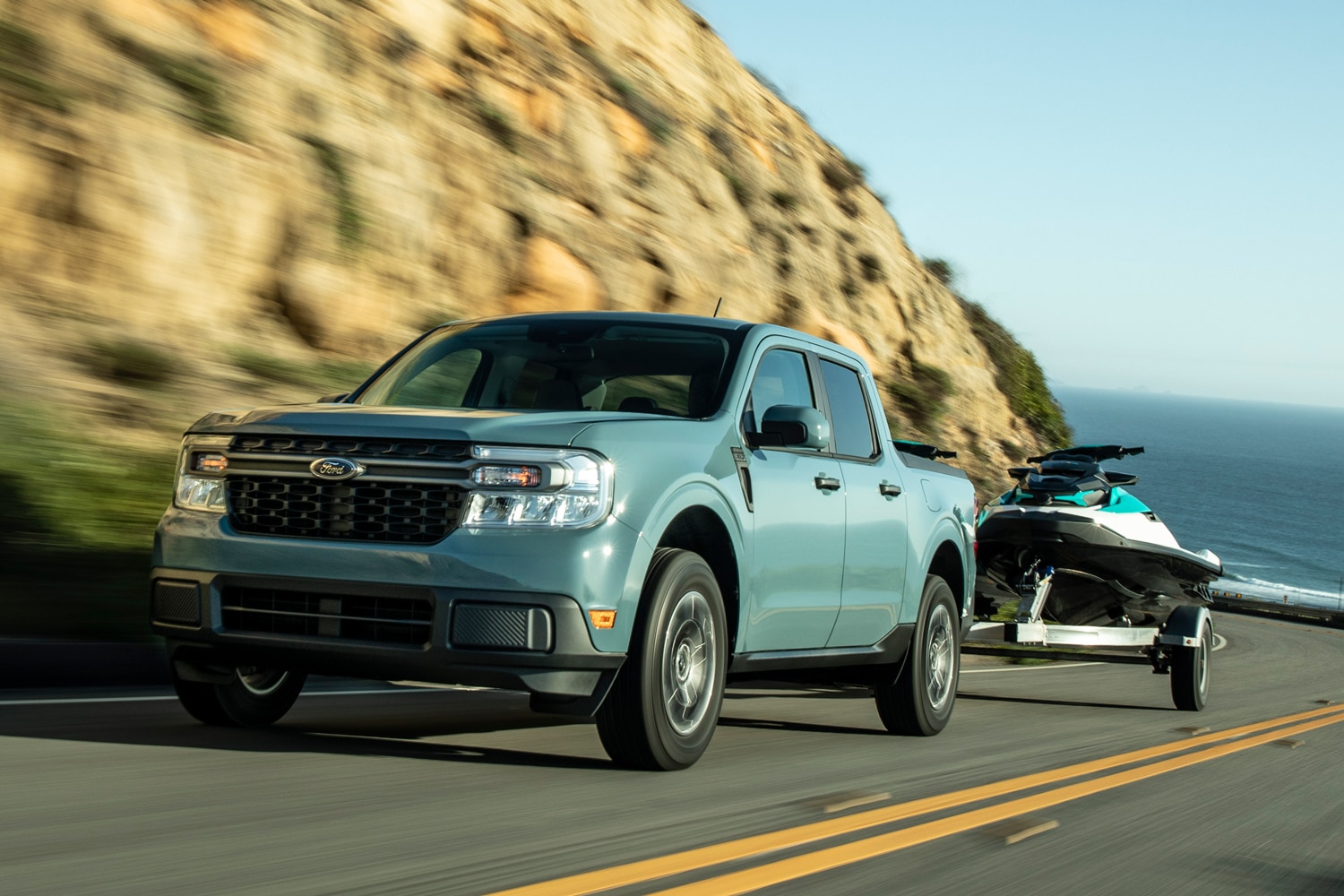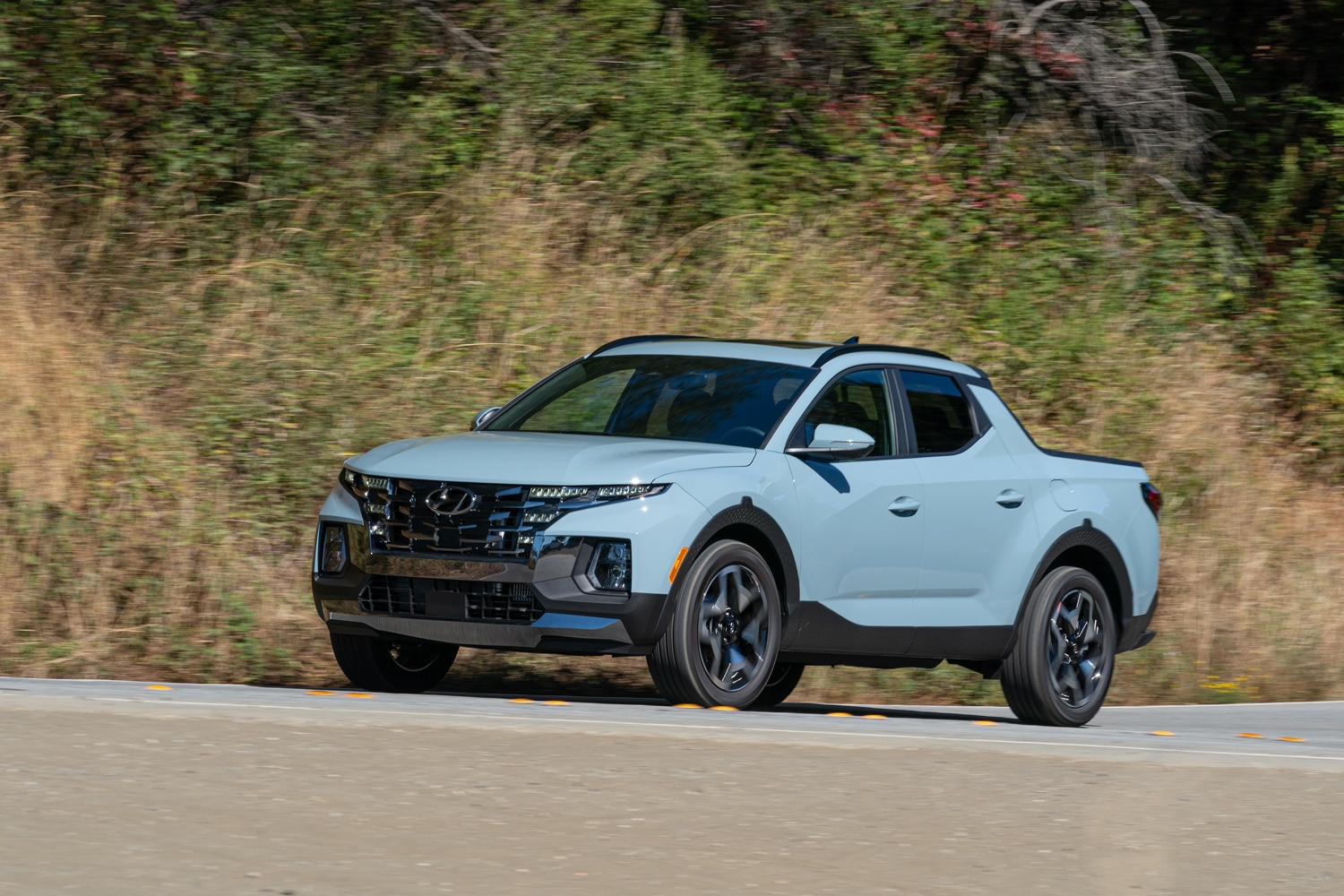Compared: 2022 Ford Maverick vs. 2022 Hyundai Santa Cruz
As the pickup truck market gets even more competitive, Ford and Hyundai have entered serious contenders into the less-crowded compact truck segment. We compare the two trucks on price, fuel efficiency, and available features.
QuickTakes:
After a long hiatus, the compact-pickup-truck segment returned in 2021 with the debut of the Ford Maverick and Hyundai Santa Cruz. Defined by their car-like unibody construction and petite proportions, these pickups will likely appeal to those who want the convenience, flexibility, and utility of a bed, but who don’t need to tow heavy loads. Which makes sense for you? This story explores how these competitors stack up in key attributes.
 Ford
Ford
Ford Maverick vs Hyundai Santa Cruz: Fuel Economy
The base Maverick comes with a 191-hp hybrid powertrain—consisting of a 2.5-liter four-cylinder engine and an electric motor—that drives only the front wheels. This truck is estimated by the EPA to get 42 mpg in city driving, which is better than the Honda Civic compact sedan can do. Its 33-mpg highway score isn’t bad either. Ford offers all-wheel drive on models equipped with the optional turbocharged 2.0-liter four-cylinder, which delivers 250 horsepower. Mavericks with that engine and front-wheel drive see 23 mpg city and 30 mpg highway, whereas those with all-wheel drive achieve 22 and 29, respectively.
 Hyundai
Hyundai
The Hyundai Santa Cruz also has two powertrain options, but both are gas-only. The base engine is a 2.5-liter four-cylinder that makes 191 horses and spurs the little truck to 21 mpg in the city and 26 or 27 mpg on the highway, depending on whether it drives two wheels or all four. The uplevel turbocharged 2.5-liter four produces 281 ponies and is available only on all-wheel-drive models, which see 19 mpg city and 27 highway. That’s less efficient than the turbocharged Maverick, but Hyundai’s optional engine feels peppier than Ford’s.
 Ford
Ford
Ford Maverick vs Hyundai Santa Cruz: Features
The base Maverick comes with cloth seats, keyed ignition, 17-inch wheels, an 8.0-inch infotainment touchscreen, manually adjustable seats, Apple CarPlay and Android Auto connectivity, LED headlights, and Ford’s FlexBed system, which comes with tie-downs and two 12-volt connections and allows owners to customize the cargo bed in myriad ways.
The highest trim provides features such as cruise control, leatherette seating surfaces, push-button start, ambient lighting, and power operation for the side mirrors, tailgate lock, driver’s seat, and rear window. The Lariat also offers a $3,750 Luxury package, which brings adaptive cruise control, a premium audio system, heating for the seats and steering wheel, and a wireless charging pad.
 Hyundai
Hyundai
Similarly, the Santa Cruz starts with cloth seats, an 8.0-inch screen and a keyed ignition but shows up the base Maverick with 18-inch wheels, wireless Apple CarPlay and Android Auto, lockable underfloor bed storage, a power-locking tailgate, a composite bed that won’t scratch or dent, and cargo-area lighting. The top-tier model includes features you can’t get on the Ford, such as a 10.3-inch infotainment screen, 20-inch wheels, ventilated front seats, the ability to use your phone as a key, an all-digital gauge cluster, and a surround-view camera.
On the safety front, Hyundai provides lane keeping as standard equipment and blind-spot collision-avoidance assist on SEL models or better. Ford offers both features as options on all trims of the Maverick.
 Ford
Ford
Ford Maverick vs Hyundai Santa Cruz: Price
The Maverick has three trims: XL, XLT and Lariat. The base model starts at $21,490; the XLT, at $23,855; and the Lariat, at $27,355. The turbo engine is available on all trims and costs $1,085. Adding all-wheel drive increases the price by $2,220.
 Hyundai
Hyundai
The Santa Cruz starts much higher, at $25,385, but includes more standard features than the Ford. Hyundai’s compact truck has four trims, with the SE and SEL getting the base engine and the SEL Premium and Limited getting the turbo. The SEL opens at $28,585, and the top two trims ring in at $37,075 and $41,115, respectively. Adding all-wheel drive on the bottom trim levels is a $1,500 charge.
Written by humans.
Edited by humans.
 Jill Ciminillo
Jill CiminilloJill Ciminillo is a Chicago-based automotive writer, YouTube personality, and podcast host, with her articles and videos appearing in outlets throughout the U.S. Additionally, she co-hosts a weekly radio show on cars for a local Chicago station. Previously, Jill has been the automotive editor for both newspaper and broadcast media conglomerates. She is also a past president for the Midwest Automotive Media Association and has the distinction of being the first female president for that organization.
Related articles
View more related articles